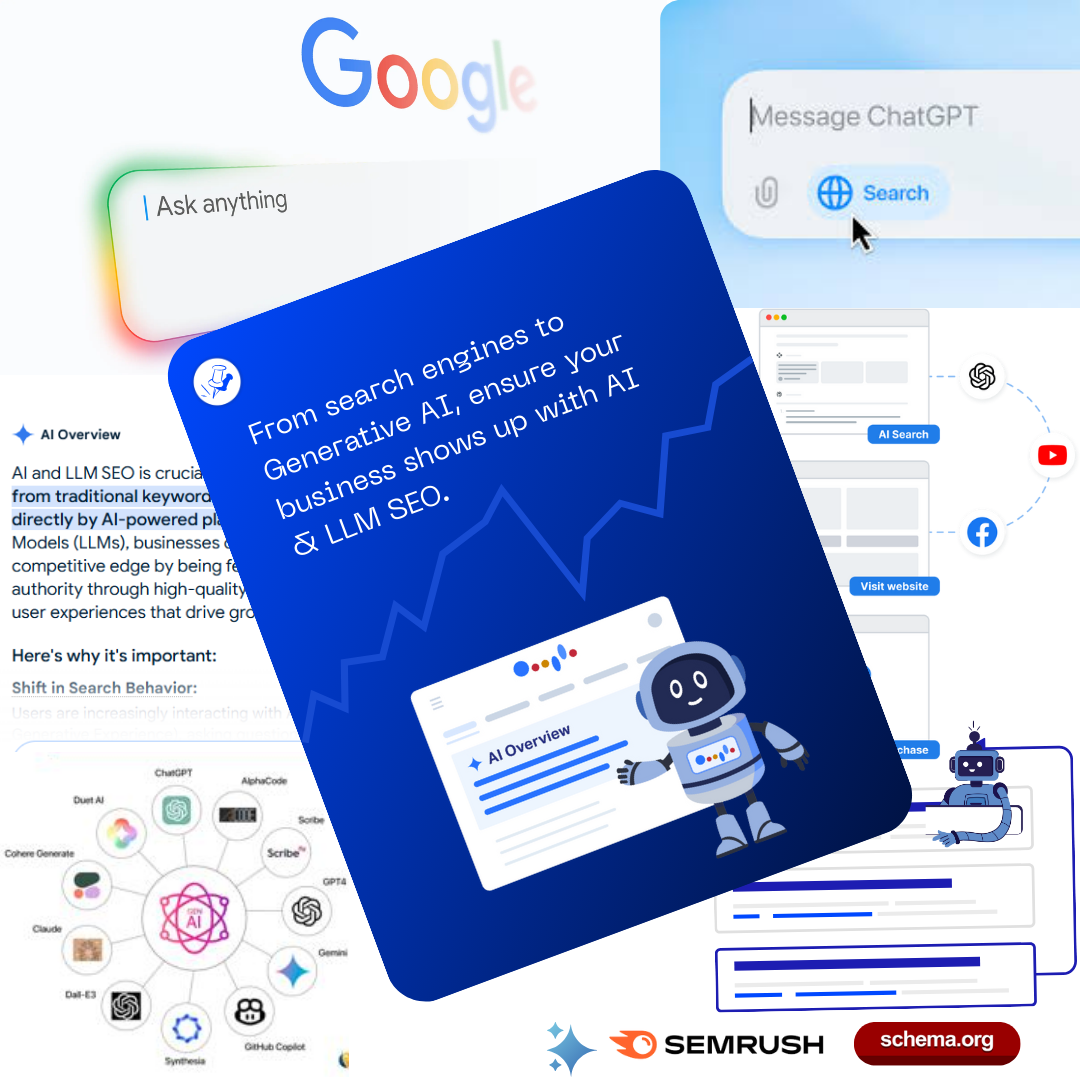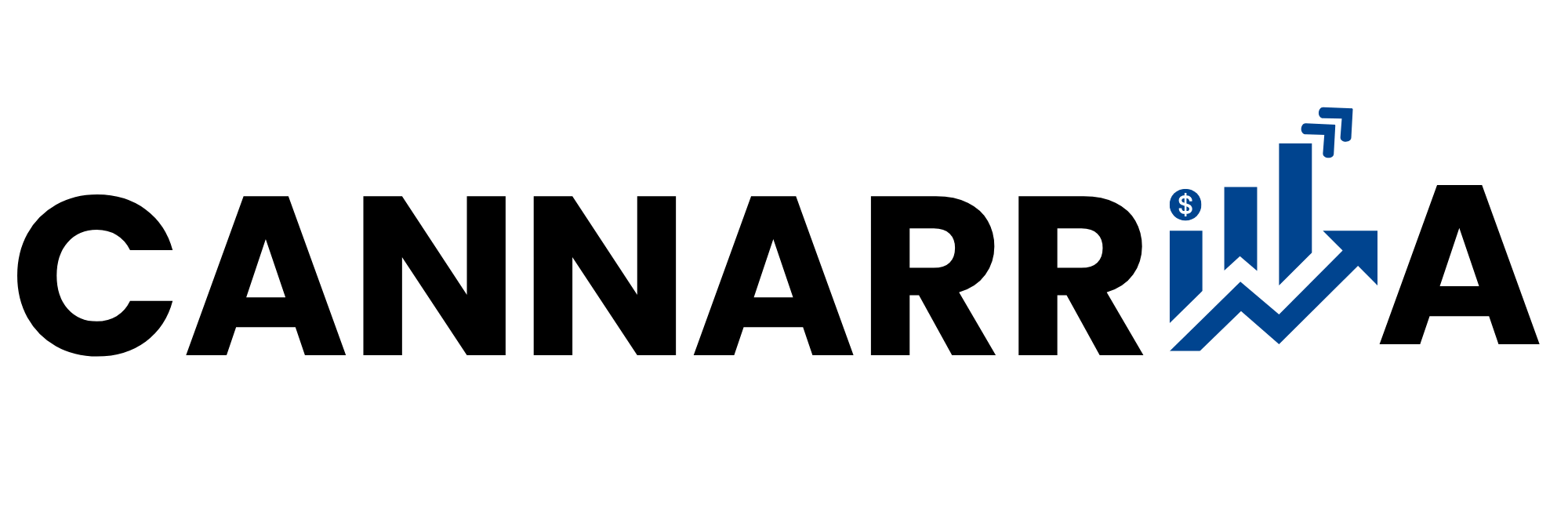Unlock the Future of SEO with Generative AI
Harness the power of advanced AI to generate high-quality, SEO-optimized content, improve user experience, and boost your rankings. Our AI-driven SEO strategies are designed to stay ahead of search engine trends and deliver measurable, long-term growth.
Why Generative AI SEO Matters

We cover the full journey – from awareness to foot traffic
Our AI SEO Services
Whether you’re targeting local or global markets, we leverage industry-leading tools and proven strategies to boost your visibility on Google. Our focus is on ranking high-intent keywords that actually convert. Unlike paid ads, SEO delivers organic traffic that compounds over time—reducing cost-per-acquisition and driving sustainable growth. Our SEO strategy zeroes in on the key factors that will elevate your organic visibility, traffic, and conversions.
Using Generative AI models, we create high-quality, SEO-optimized content at scale. From blog posts to product descriptions, our AI content is both keyword-rich and contextually relevant to improve rankings and engagement.
Easily Crawlable
Search engine bots (Googlebot, Bingbot, etc.) should be able to easily crawl your site without obstacles.
Key points:
Clear internal linking structure.
No important pages blocked in robots.txt.
HTML navigation menus, not hidden in scripts.
Clean, descriptive URLs with minimal parameters.
Common issues:
Blocking key pages in robots.txt.
Broken internal links (404 errors).
Over-reliance on JavaScript navigation.
Orphan pages with no inbound links.
Fully Indexable
Once crawled, pages are stored in the search engine’s database and can appear in search results.
Key points:
No accidental noindex tags.
Unique content, no duplicates.
Proper 200 OK status.
Schema markup and metadata for clarity.
Common issues:
Noindex tags on key pages.
Duplicate content without canonical tags.
Pages behind login walls.
Slow or error-prone servers hindering indexing.
Mobile Optimized
Your website must be designed and optimized to work seamlessly on smartphones and tablets.
Key points:
- Responsive design that adapts to different screen sizes.
- Text is readable without zooming.
- Buttons and links are tap-friendly (spaced well apart).
- Fast loading speed on mobile connections.
Common issues that hurt mobile friendliness:
- Desktop-only design that forces horizontal scrolling on mobile.
- Small text and unclickable buttons.
- Pop-ups or interstitials covering the screen.
- Large uncompressed images slowing down load time.

Leverage AI to identify high-impact keywords, search intent, and competitor gaps, allowing us to focus on long-tail keywords that drive qualified traffic.
Search Intent Analysis
Understand what users truly want so your content directly satisfies their needs.
Key points:
- Identify whether a search query is informational, navigational, or transactional.
- Study SERP features (featured snippets, shopping results, videos) to see how Google interprets intent.
- Compare top-ranking pages to find common content types and formats for that intent.
- Adjust your content to align with both user expectations and search engine signals.
High-Volume Keyword Targeting
Capture broad audience interest and drive traffic growth through popular search terms.
Key points:
- Target keywords with high search volume but manageable competition.
- Create comprehensive pillar pages that cover these topics in depth.
- Use internal linking to funnel traffic from these high-traffic pages to conversion-focused ones.
- Monitor performance to ensure traffic quality, not just quantity.
Long-Tail Keyword Discovery
Find niche search terms with strong purchase or conversion intent.
Key points:
- Target phrases of 3+ words that indicate specific needs.
- Often have lower competition, making them easier to rank for.
- Attract highly qualified leads ready to take action.
- Use search suggestions, People Also Ask, and related searches for ideas.
Paid Search Data Integration
Leverage PPC insights to uncover high-converting keywords for SEO.
Key points:
- Analyze Google Ads or Meta Ads data to find terms with the highest conversion rates.
- Identify which ad copy or landing pages perform best for these keywords.
- Use paid search click-through rate (CTR) data to refine organic titles and descriptions.
- Prioritize keywords where paid results show strong ROI for organic targeting.

Our AI tools automatically analyze your existing content and suggest optimizations for better keyword placement, readability, and engagement, while ensuring a personalized experience for your audience.
Competitive Keyword Intelligence
Identify competitor-targeted high-value keywords and discover untapped opportunities.
Key points:
Analyze competitor keyword rankings.
Find high-volume, low-competition keywords.
Understand keyword intent (informational, transactional).
Use keyword gap tools for comparison.
Content Strategy Insights
Identify competitor-targeted high-value keywords and discover untapped opportunities.
Key points:
Analyze competitor keyword rankings.
Find high-volume, low-competition keywords.
Understand keyword intent (informational, transactional).
Use keyword gap tools for comparison.
Competitor Backlink Profile Review
Uncover competitors’ strongest links and missed link-building opportunities.
Key points:
Identify top referring domains.
Analyze anchor text diversity.
Find blogs, directories, or partners for pitching.
Reclaim broken backlinks pointing to them.
Gap & Opportunity Mapping
Pinpoint competitor weaknesses and turn them into SEO advantages.
Key points:
Identify missing content topics.
Find keyword rankings on pages 2-3 that you can outrank.
Analyze under-optimized pages for better content.

We use AI-powered tools to perform comprehensive SEO audits and deliver actionable insights that lead to faster, data-driven decision-making.
Scalable SEO Implementation
Apply proven SEO best practices across hundreds or thousands of pages at once.
Key points:
- Standardize URL structures, heading formats, and internal linking across all pages.
- Ensure site-wide technical settings like canonical tags and structured data are correctly applied.
- Avoid manual, page-by-page updates that slow down large-scale optimization.
Dynamic Content Insertion
Automatically populate page elements with relevant, targeted keywords.
Key points:
- Pull keywords dynamically from product names, categories, or database fields.
- Auto-generate SEO-friendly titles, H1 headings, and meta descriptions at scale.
- Reduce duplication by combining static and dynamic text in metadata.
- Maintain flexibility so keywords can be updated centrally without touching each page.
Consistent SEO Elements
Maintain a uniform optimization structure across all templates for stronger search signals.
Key points:
- Use consistent title formats, meta descriptions, heading hierarchies, and structured data.
- Apply the same schema markup standards across all relevant page types.
- Ensure internal linking patterns remain logical and consistent.
- Keep keyword targeting aligned across similar content types to build topical authority.

Generative AI is also used to improve user experience by analyzing behavior and personalizing the site’s layout, content, and structure to improve conversions and retention.
URL Mapping & Redirects
Maintain SEO performance during migration by ensuring every old URL points to the correct new page. Accurate 301 redirects help preserve link equity and prevent user drop-offs.
Key points:
- Create a detailed URL mapping document before migration.
- Implement 301 redirects from old URLs to their corresponding new URLs.
- Test all redirects to confirm they work correctly.
- Avoid redirect chains and loops that can slow down page load and hurt rankings.
Backlink Preservation
Track and analyze your SEO performance immediately after the migration to catch issues early.
Key points:
- Monitor keyword rankings daily for significant drops.
- Check Google Search Console for crawl errors or warnings.
- Track organic traffic trends in Google Analytics.
- Quickly fix broken links, missing meta tags, or indexing issues.
Post-Migration Monitoring
Protect the authority and trust signals your site has earned over time by carrying forward valuable backlinks.
Key points:
- Identify all high-value backlinks using SEO tools
- Ensure linked pages are redirected to equivalent new content.
- Update partners or referring sites if their backlinks point to outdated URLs.
- Monitor for lost backlinks and reclaim them quickly.
Technical SEO Checks
Ensure the technical foundation of your site remains strong post-migration to maintain rankings and performance.
Key points:
- Audit indexing status and confirm important pages are included.
- Verify XML sitemap and robots.txt are updated and correct.
- Check site speed and Core Web Vitals.
Ensure meta tags, schema markup, and canonical tags are preserved.

Harness predictive AI models to forecast trends, SEO performance, and potential areas of opportunity. Stay ahead of algorithm changes and adapt your strategy in real-time.
URL Mapping & Redirects
Maintain SEO performance during migration by ensuring every old URL points to the correct new page. Accurate 301 redirects help preserve link equity and prevent user drop-offs.
Key points:
- Create a detailed URL mapping document before migration.
- Implement 301 redirects from old URLs to their corresponding new URLs.
- Test all redirects to confirm they work correctly.
- Avoid redirect chains and loops that can slow down page load and hurt rankings.
Backlink Preservation
Track and analyze your SEO performance immediately after the migration to catch issues early.
Key points:
- Monitor keyword rankings daily for significant drops.
- Check Google Search Console for crawl errors or warnings.
- Track organic traffic trends in Google Analytics.
- Quickly fix broken links, missing meta tags, or indexing issues.
Post-Migration Monitoring
Protect the authority and trust signals your site has earned over time by carrying forward valuable backlinks.
Key points:
- Identify all high-value backlinks using SEO tools
- Ensure linked pages are redirected to equivalent new content.
- Update partners or referring sites if their backlinks point to outdated URLs.
- Monitor for lost backlinks and reclaim them quickly.
Technical SEO Checks
Ensure the technical foundation of your site remains strong post-migration to maintain rankings and performance.
Key points:
- Audit indexing status and confirm important pages are included.
- Verify XML sitemap and robots.txt are updated and correct.
- Check site speed and Core Web Vitals.
Ensure meta tags, schema markup, and canonical tags are preserved.

How It Works
We cover the full journey – from awareness to foot traffic
Audit & Strategy
AI + experts analyze your site and competition to plan growth.
Keyword & Topic Modeling
AI finds high-value keywords and organizes content ideas.
Content Generation & Optimization
AI drafts and refines SEO-ready content with human review.
Tracking & ROI Reporting
AI tracks performance and ROI, guided by expert insights.
Partner with Us for AI SEO Success
We Turn Every Click, View & Scroll into Your Edge with Your Existing Data Existing Data Existing Data
AI-Powered Precision
We lead the way in using Generative AI to push the boundaries of SEO, creating content that ranks and engages while saving time and resources.
Scalable and Efficient
AI allows us to scale your SEO efforts without compromising on quality, delivering results at a fraction of the time and cost of traditional methods.
Rank Faster, Win Bigger
Every business is unique. We develop tailored Generative AI strategies that align with your specific needs and goals, ensuring maximum impact.
Continuous Optimization
Continuous AI Monitoring Keeps Your SEO Strategy Sharp 24/7, Driving More Traffic, More Leads, More Growth—No Fluff, Just ROI.
FAQ's
Item #1
Item #2
Item #3
Item #3
Free Estimation
Ready to Leverage Generative AI for Your SEO Strategy?
Let’s explore how AI-powered SEO can transform your digital presence and accelerate growth.

